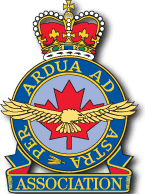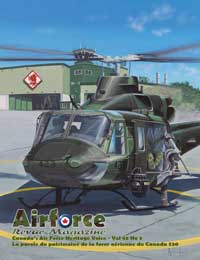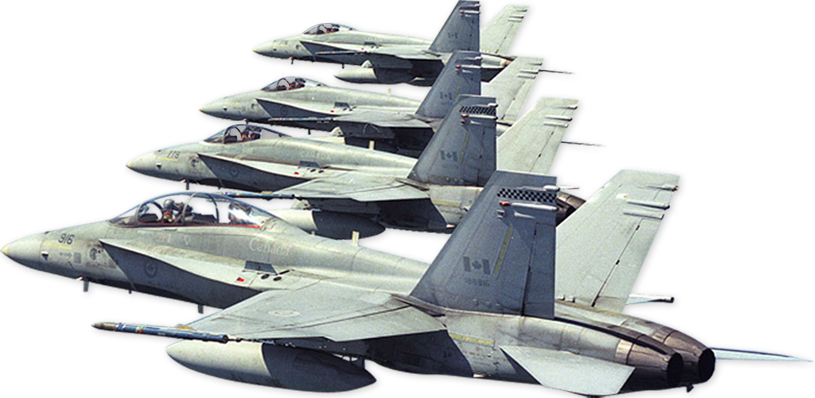ADMINISTRATIVE STRUCTURE AND FUNCTION
The administrative structure of the RCAF Association is the three-tier structure common to business and industry in the 20th century. The three-tier organization, while defining the limits of responsibility and action by each segment of the organization, provides each segment with freedom of action to initiate and develop its own programs in keeping with the general policies and practices of the organization as a whole. In addition the organization permits the ready transmission of ideas and methods from the lower levels to the higher where their suitability for general adoption can be considered and where their reception may have a direct bearing on future policy. In this regard, “suitability” means the extent to which the association has the resources and the will to carry out that which is being suggested.
The National Level
In a country-wide three-tier organization the top level is the national one. This is the policy level where decisions affecting the conduct of affairs within the whole organization are made. In business this level is represented by the Head Office where company policy is set and from where directives outlining that policy go forth. Necessary instructions as to how that policy must be implemented are sent to those who must carry it out at the regional and local levels. Normally, however, the details of policy implementation are not the concern or responsibility of the policy-making executives. Their knowledge and studies of all elements of the organization have led them to the judgment that certain policies are practical but the administration of these policies rests with others. This is where the administrators and specialists at all levels step in to work out the details and put into operation the activities which best express the established policies. It is up to the policy-makers to study the progress of this implementation, supporting and assisting it, and observing its effectiveness in bringing to the organization the benefits desired.
The Regional Level
The intermediate level is the regional level. In business, the regional office carries out a function similar to that of the head office, but on a regional basis. It is at this level that the policies established at the top are reiterated and set out in terms applicable to the particular region. Policies and practices that affect that region alone may be established by the regional executives, whose prime concern is growth and development in their area of responsibility. In this regard, they are free to originate and direct affairs without recourse to the head office, but are of course, bound by the policies and business practices laid down by the head office for the whole company. The success achieved by policies and methods developed and practices at a regional level may well lead to their adoption on a national basis.
The Local Level
The lowest level must, of necessity, be the broadest and the strongest for on it rests the upper parts of the structure. This is the foundation level. Each unit or component at this level operates individually in its own locality. The greater the density of these units the stronger the foundation provided for the whole structure.
At the local level the policies of a business or organization face their sternest test. Executives at this level must direct affairs in keeping with national and regional policies but, like the regional executives, they are free to originate and develop ideas on their own. Whatever success they achieve in carrying out the national and regional aims in their locality will be reflected at both the intermediate and top levels of the structure. Their actions and the actions of their representatives or members will determine the regard in which the whole national body is held. Their acceptance of responsibility at this point of broadest public contact is the determining factor in the success or failure of the national policy.
While national policy on the one hand terminates in action at the local level it also has its beginning at the same level. The response, the reaction to activity at the local level reverberates to the top level of the structure where it is the most influential factor of all in the shaping of policy.
The RCAF Association is constituted as a three-tier organization structure. As we have seen this implies the acceptance of certain responsibilities and the operation of certain functions at three different levels with full cooperation and coordination between all three in the carrying out of the aims and objectives of the organization as a whole.
The National Executive Council
The National Executive Council is the top level in the RCAF Association. It consists of three groups of elected officials, each group elected in a different way. The first segment, elected by ballot at the Regular General Meeting of the Association, consists of Grand President, President, First Vice-President, Second Vice-President, Third Vice-President, Fourth Vice-President (Financial), Chairman, Vice-Chairman, Legal Adviser and Women‟s Division Representative (National). The immediate Past President automatically remains a member of Council during the term of office of his immediate successor.
The second segment of the National Executive Council consists of Group Representatives. The President of each Group Executive Council is by right a member of the National Executive Council during his term of office. Three additional Group Representatives are elected by their groups to the National Executive Council; one each from the Maritime, Quebec and Ontario Groups.
The third segment consists of the Women‟s Division Representative (Eastern Canada), Women‟s Division Representative (Central Canada) and Women‟s Division Representative Western Canada. Each is elected at the Regular General Meeting of the Association by a majority vote of the representatives and delegates of the respective Groups.
The powers of the National Executive Council (By-law #5) are in the areas of general supervision and the formulation of policy. The Council views the association from a national point of view, and therefore must concern itself with the broad policies which will strengthen the association as a national organization. While the Council must understand and be capable of assessing the possibilities for fruitful development of policy or practice, it nonetheless cannot be expected to work out the details of execution of such policy at either Group or Wing level. Once a policy decision has been reached, the responsibility for developing and conducting programs or projects putting the policy into effect rests with appointed administrators. Administration is almost wholly the responsibility of the Association Secretary-Manager, the Group Executive Councils and the Wing Executives.
With the implementation of policy in the hands of the administrators, the Council‟s work however is not finished. It now must study the progress and effect of the policy implementation, maintaining a national outlook.
In the main, the function of the National Executive Council is to inspect and to analyze; to find the points of weakness in the Association and then to initiate policies to strengthen those weaknesses; in brief, to plot a wise course with the aims and objects of the association as a guide.
The Secretary-Manager
The central figure in the administration of Association affairs is the Secretary-Manager. His duties are to carry out the directions of the President and National Executive Council, to manage the affairs of the Association and of the Association‟s national office. His position, affording day-by-day contact with all aspects of Association activity, is a vantage point from which both Association progress and pitfalls can be observed. His observations and his assessment of the Association‟s position can be of inestimable value to the National Executive Council, the Group Executive Councils, Wing executives and membership.
The function of the secretary-manager is to put into action such procedures, programs, campaigns etc., which best serve to reach the policy objectives set by the National Executive Council. Having to direct the affairs of the association to this end, he becomes the consultant-adviser to the Council and, as a permanent official, is in a position to present positive recommendations for the preservation of continuity from year to year in Association development.
Assisting the secretary-manager in his administrative duties is the administrative sub-committee, which is composed of not less than three, nor more than five of the National Executive Council. The sub-committee meets as required and at the discretion of the chairman to interpret or clarify any particular points of Council policy, to make decisions on administrative matters and to transact items of business which are outside the terms of reference of the Secretary-Manager.
The Group Executive Council
At the intermediate level in the administrative structure of the Association is the Group Executive Council, responsible for the direction of Association affairs in a defined area. Six groups are established, i.e., the Maritime, Quebec, Ontario, Manitoba-North-west Ontario, Saskatchewan, and Alberta Groups. When for a time Wings which had formed a British Columbia Group became dormant the Group organization was disbanded. The resurgence however of active Wings in Vancouver and Victoria anticipates future reestablishment of this Group.
Each Group Executive Council consists of the President, Vice-President, Honorary Treasurer, National Executive Council member or members for the Group, and such other officers and members as may be determined at a regular or special group meeting.
A Group Executive Council, within its region, is both an extension of the National Executive Council in that it is committed to the national policy, and the executive branch of the association in its area whose purpose is to carry out the objects of the Association. A regional council may initiate, for the benefit of the wings under its jurisdiction, policies and programs separate from but complementary to the national program.
The function of the Group Executive Council is to coordinate and encourage the efforts of the Wings of the Association in its region, to originate and direct a suitable program for the advancement of Association aims and to carry out the policy directions issued by the National Executive Council.
The broad base of the RCAF Association structure is the Wing level. While it is appreciated that the local organization is directed by Association policies established by the members‟ representatives at both the regional and national levels, it must not be forgotten that in addition to this Wing executives may originate programs and projects to meet the specific needs of the membership and the community in which the Wing is located.
Each Wing Executive Council carries out on a smaller scale the same type of policy making and programming as a group or national council. Its area of responsibility is local and in this area it is faced with a wide range of possibilities. Projects and activities commenced at the local level for the benefit or enjoyment of local members, or as a service to the community, may be suitable for adoption by the association on a regional and eventually a national basis.
Thus the Wing executive in its direction of local Association affairs is in a position to add great strength to the Association as a national organization. Wing members are anxious to demonstrate that the qualities on which their fine record of service was based are the same qualities on which good citizenship is based. It is the function of the Wing executive to provide the means whereby these qualities may be exercised in effective demonstration to the community that former air force personnel are capable and responsible citizens, proud of their service accomplishments, and proud to participate in community advancement.








